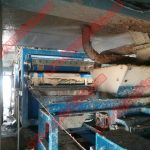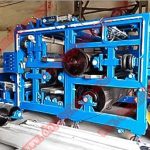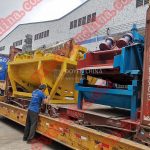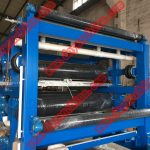

Tel:
+86-757-8633-0278
Email:doyen@doyenchina.com
Fax:+86-757-86287390
Address:Room 201, Building No. 24, Yicui Rose Garden, No. 2, Jihua 7 Road, Chancheng District, Foshan City, Guangdong Province, China 528000.
Glass water treatment system:Our glass water treatment system has simple equipment operation, high effluent quality, automatic PLC control, low operating costs, high water recycling efficiency, and can significantly reduce water consumption, save energy, and achieve significant economic and social benefits.
Risk of work with dirty glass water
The particles of glass normally thicken and sediment even if they are submerged in glass water. They sediment and thicken along the pipes, in the tanks, injectors and in the structure of the machines, creating a real crust like cement which is expensive and hard to remove and requires the use of pneumatic drills and many working hours.
The most important problems are the ones caused by dirty water in the glass working process. The micro particles will eventually remain attached on the glass surface creating defectiveness in the final result. Today, thanks to the diffusion of quality controls made by scanner machines, these defectiveness can easily be found and it can bring to the waste of entire batches of glass.
Meanwhile, the machining of glass creates glass finings that contaminate the process water and makes regular cleaning necessary. It is not permitted to dispose of the waste water in the sewage system.
Due to an increase in productivity and considerable cost savings, Doyen glass water treatment system usually pays off after a short time:
Benefits
Extended operating times as the machine does not have to be cleaned regularly
Higher output due to an increased grinding speed with edge quality remaining the same
Less subsequent cleaning effort of the polished glass products.
Considerable reduction of fresh and waste water costs
Environmental protection
Improved quality of grinding and polishing
Longer service life of tools
Automatic operation
Simple and low-maintenance cost
How to work:
Wastewater generated from glass processing machines is collected in a pit and then is pumped into a silo. Meanwhile, by adding small amounts of flocculants, it helps to separate finest particle. Glass particles and flocculants mix and settle down to the bottom of the silo and then is pumped into a filter press. The clean water from the silo top overflows into the clean water tank and gets pumped to the glass processing machines as recycling.

 +86-757-8633-0278
+86-757-8633-0278 doyen@doyenchina.com
doyen@doyenchina.com Sitemap
Sitemap



